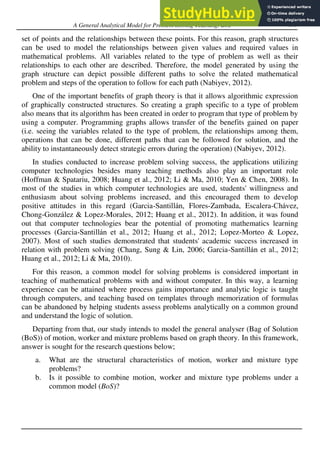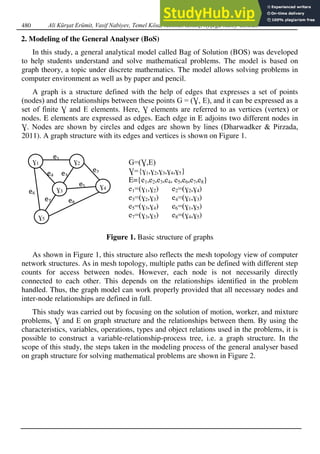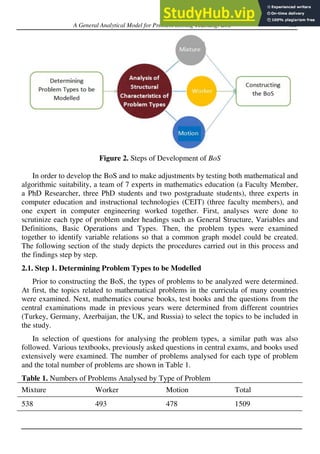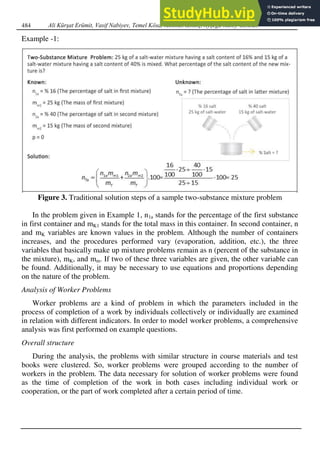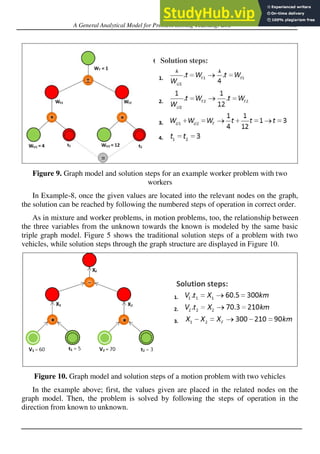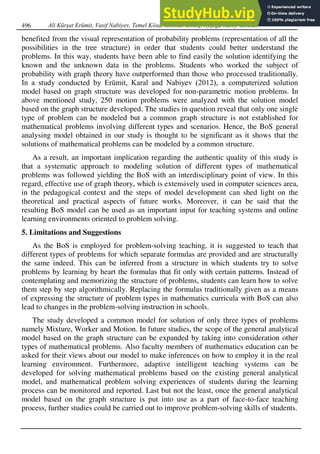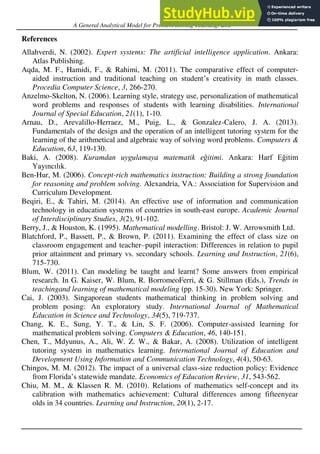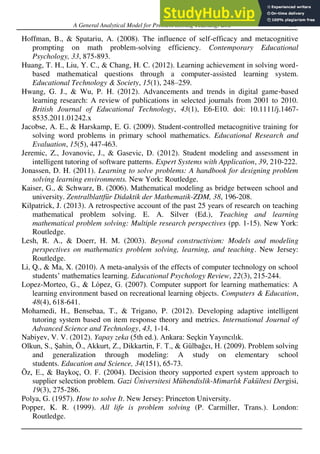This document presents a general analytical model called Bag of Solution (BOS) to help students understand and solve mathematical problems. The model is based on graph theory and aims to develop a common structure to solve three types of problems: mixture, worker, and motion problems. To develop the model, the authors examined 1509 problems of these three types and determined common variable relations and a graph model. The BOS model allows solving problems both manually and via computer as it is algorithmic. The study shows these different problem types can be solved using a single model. It is expected the BOS will provide an algorithmic basis for computerized instruction and help students develop a new understanding of the problem solving process.



